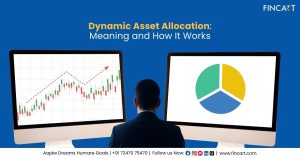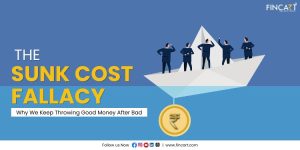2025 isn’t just another year—it marks a phase where investing demands sharper strategies, faster adaptability, and smarter decision-making. With interest rate shifts, global market uncertainty, and the rise of new investment avenues like international ETFs, green bonds, and digital assets, sticking to old portfolio approaches may leave your wealth vulnerable.
If you want your money to not just survive but thrive, you need a future-ready investment portfolio—one that balances growth, stability, and risk in an unpredictable financial world.
This article will explain what a future-ready investment portfolio is, why it matters in 2025, and how to structure one using proven wealth growth strategies that work regardless of market noise.
What Is a Future-Ready Investment Portfolio?
A future-ready investment portfolio isn’t about chasing quick gains—it’s about creating sustainable wealth. It is:
- Diversified across asset classes to reduce risk and avoid overdependence on one market.
- Designed to withstand economic fluctuations, ensuring stability even during volatile periods.
- Optimized for tax efficiency, so your net returns remain stronger over time.
- Aligned with long-term financial goals rather than reacting to short-term market noise.
Unlike ad-hoc investments, this structured approach—often built with the help of a professional investment advisor or investment planner—helps you stay focused on consistent growth instead of running after the latest trends.
Why Do You Need to Make Your Portfolio Future-Ready in 2025?
Today, building a future-ready investment portfolio isn’t optional—it’s essential if you want consistent wealth growth and financial stability. Several factors make it necessary:
- Economic uncertainty: Global markets continue to face volatility driven by inflation, fluctuating interest rates, and geopolitical tensions. A resilient investment portfolio can protect your investments during unpredictable cycles.
- Emerging asset classes: Opportunities are expanding beyond traditional equity and debt. Digital assets, green bonds, and international ETFs are gaining traction and can enhance diversification.
- Changing tax regulations: Evolving tax laws mean that optimizing for tax efficiency will directly impact your net returns.
- Financial independence goals: Whether your aim is early retirement, funding your child’s education, or creating passive income, a structured portfolio designed with the help of an investment service ensures you stay in control and reach these milestones faster.
Step 1: Define Clear Financial Goals
Before you start building your investment portfolio, it’s crucial to be absolutely clear about what you’re investing for. Your financial goals will determine not just where you put your money, but also how much risk you can take and what kind of returns you need.
Consider breaking your goals into three categories:
- Short-term goals (0–3 years): For example, creating an emergency fund or saving for a car.
- Medium-term goals (3–7 years): Such as planning for a home down payment or children’s education.
- Long-term goals (7+ years): Including building a retirement corpus, achieving financial independence, or planning wealth transfer.
Each category demands a different investment approach, risk tolerance, and asset allocation strategy—something a skilled investment planner can help you refine—so you meet your targets without unnecessary stress.
Step 2: Diversify Across Asset Classes
Relying on a single asset class won’t make your investment portfolio future-ready. Diversification is essential to balance risk and growth. A well-structured mix might include:
- Equity: Drives high long-term growth but comes with higher risk and medium liquidity.
- Debt/Bonds: Offers stability and regular income, with low risk and high liquidity.
- Gold: Acts as an inflation hedge and adds medium risk with high liquidity.
- Real Estate: A tangible asset that provides potential appreciation but has medium-to-high risk and low liquidity.
- International ETFs: Add geographic diversification, moderate risk, and high liquidity.
Tip: In 2025, consider allocating a portion of your portfolio to global markets and emerging sectors like EVs, technology, and healthcare to capture new growth opportunities.
Step 3: Use Systematic Investment Plans (SIPs)
In India, Systematic Investment Plans (SIPs) are among the most reliable ways to grow wealth steadily over time. They provide multiple benefits, including:
- Regular, manageable investments: You can start with small amounts instead of waiting to accumulate large lump sums.
- Market volatility management: SIPs use the principle of rupee-cost averaging, which helps balance the impact of market ups and downs.
- Built-in financial discipline: By automating your contributions, you remain consistent regardless of short-term market fluctuations.
For instance, investing ₹10,000 per month in an equity mutual fund for 15 years—assuming a 12% annual return—could potentially grow your corpus to ₹50+ lakhs, showcasing how disciplined investing leads to substantial long-term results.
Step 4: Prioritize Tax Efficiency
A future-ready investment portfolio is not only about growing your wealth—it’s also about ensuring that you retain more of your returns by minimizing tax leakage. To make your investments tax-efficient, consider:
- Using ELSS mutual funds: These qualify for deductions under Section 80C, reducing your taxable income.
- Investing in the National Pension System (NPS): Offers additional tax benefits beyond the standard 80C limit.
- Focusing on long-term capital gains: Holding investments for longer periods helps you benefit from lower tax rates compared to frequent short-term trades.
Step 5: Balance Risk and Return
The best investment portfolio strategy for 2025 isn’t necessarily the one promising the highest return—it’s the one that aligns with your risk tolerance and long-term objectives.
Your portfolio structure should reflect how much volatility you’re comfortable handling:
- Aggressive investors: Can take higher risks and may allocate 70–80% to equity, with a small portion in international funds for diversification.
- Moderate investors: Prefer a balanced approach, combining equity, debt, and gold to manage both growth and stability.
- Conservative investors: Focus more on debt funds, bonds, and capital-protection instruments, prioritizing safety over aggressive growth.
Step 6: Include Inflation-Proof Assets
To protect your investment portfolio, include assets that can maintain or increase their value over time, such as:
- Gold ETFs or Sovereign Gold Bonds: Historically reliable as an inflation hedge.
- Real estate in developing growth corridors: Offers potential appreciation that outpaces inflation.
- Equity funds focused on companies with strong pricing power: These businesses can pass rising costs to consumers, helping preserve profits and investor returns.
Step 7: Regular Portfolio Review
A future-ready investment portfolio is never a one-time setup. Markets evolve, your personal goals may shift, and life situations can change unexpectedly. To keep your investments aligned with your objectives:
- Review your portfolio at least once a year to track performance.
- Rebalance to maintain your target asset allocation and avoid unintended risk exposure.
- Exit underperforming assets that no longer fit your strategy or financial goals.
Step 8: Leverage Expert Guidance
Many investors don’t lose money because they choose the wrong assets—they lose it because they lack a structured plan. Working with a certified investment advisor or investment planner can make a significant difference.
An expert can:
- Analyze your goals and risk profile to ensure the right strategy.
- Create a personalized investment portfolio tailored to your timelines and objectives.
- Help you save taxes by optimizing investment choices.
- Keep you disciplined during market volatility, preventing emotional decisions.
Top Mistakes to Avoid in 2025
- Chasing trends (crypto, penny stocks, etc.) without understanding risk.
- Ignoring emergency funds—this can force you to sell investments early.
- Not insuring adequately—a sudden medical bill can destroy your financial plan.
- Failing to plan taxes—can erode your returns significantly.
Quick Checklist for a Future-Ready Portfolio
✔ Have you defined short, medium, and long-term goals?
✔ Is your investment portfolio diversified across equity, debt, gold, and other assets?
✔ Are you investing through SIPs?
✔ Do you have adequate emergency funds and insurance?
✔ Do you review and rebalance annually?
✔ Are your investments tax-efficient?
Conclusion
A future-ready investment portfolio is not about predicting markets—it’s about being prepared for any market condition. By diversifying smartly, leveraging SIPs, balancing risk, and reviewing regularly, you can grow your wealth steadily in 2025 and beyond.
If you’re unsure where to begin, let our Fincart investment advisors help you. We’ll design a portfolio tailored to your goals, risk appetite, and tax needs—so you can focus on living life while your money works for you.




